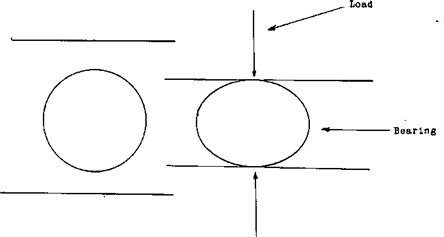To start with there are five areas of concern that are taken into account when selecting the metals that go into the construction of the different bearings. They are:
ANTI-SEIZURE PROPERTIES
When a bearing becomes seized, what happens is that the two metal surfaces that are in contact with one another become welded together. Different metals weld at different rates and temperatures.
COMPRESSIVE STRENGTH
The bearing should be able to support the weight of whatever load it is carrying without flattening.
FATIGUE STRENGTH
A bearing is subjected to what is known as a dynamic load, or a force that imparts motion. If the allowable load is exceeded, small areas of metal are loosened until there isn’t sufficient bearing surface left to carry the load. The bearing will then fail.
CORROSIVE RESISTANCE.
This is important for the operator or helper that is required to lubricate his own equipment. With time and temperature oil will react with metal to become acidic. How this will react on bearings will depend upon the bearings metal composition. Also it is this composition that determines which additives are added to the oil to minimize acidic corrosion. Using the right lubricant is critical to the life expectancy of bearings.
IMBEDABILITY.
This is the last property taken into account. It is simply the tolerance the bearing metal has to dirt particles.

As you know, to reduce wear, friction between two moving surfaces must be kept to a minimum. This usually means a bearing and a lubricant. Bearings as I have just explained, have many compositions and work in many environments. The designs of the different bearings however are limited to just three basic categories.



